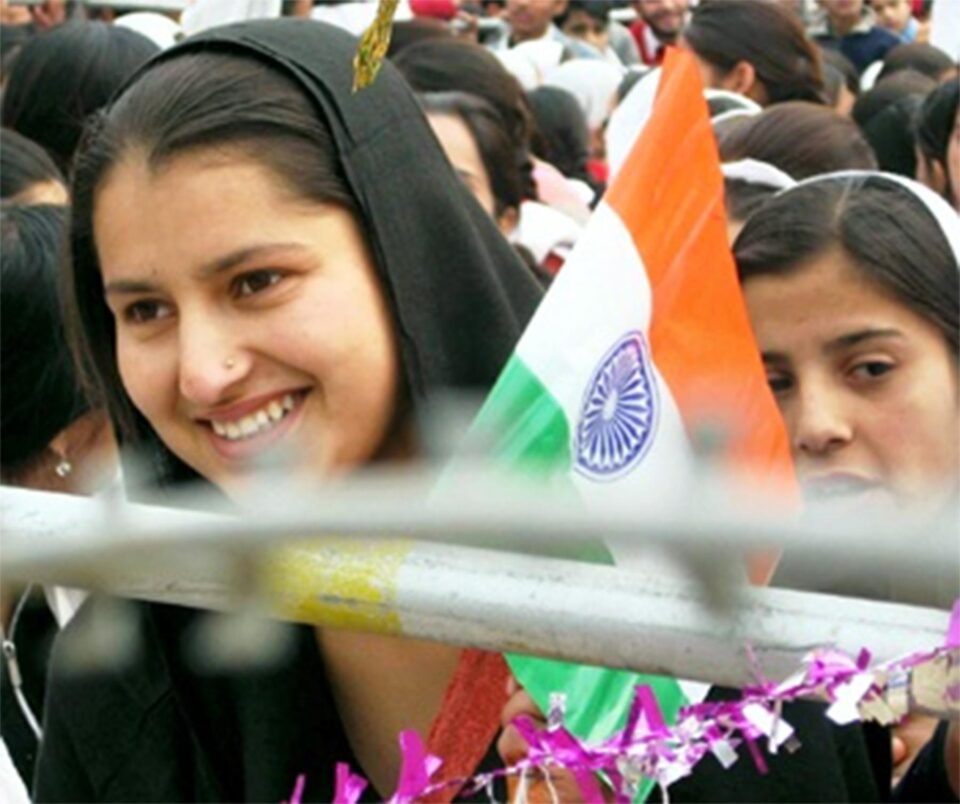Even before the 2004 Lok Sabha elections a debate had started among Muslims, especially on internet forums, on whether or not secular parties are really secular. Ongoing campaign of harassment and anti-Muslim violence launched by Hindutva supporters and recent entry of All India Majlis-e-Ittihadul Muslimeen (MIM) in Bihar, Maharashtra and UP has now reignited the debate with much more intensity. Social media activists have also been debating whether a Muslim party like the MIM is desirable and is able to help Muslims come out of present morass?
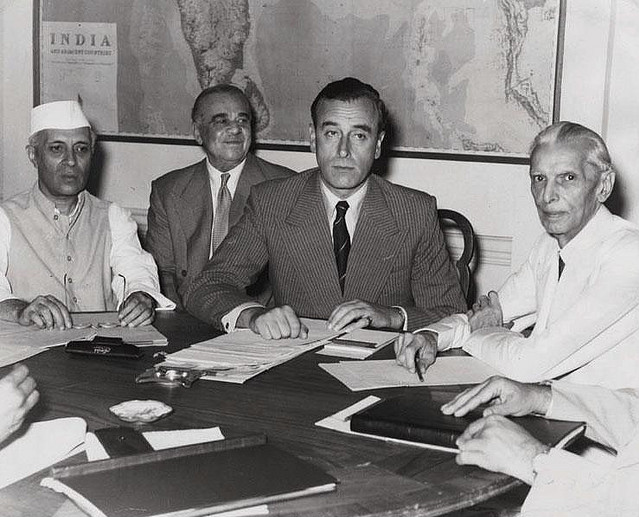
Whether a party for Muslims is desirable and whether it will help or harm the Muslims is a separate issue and needs serious analysis and careful deliberations. However, because the real background and main reason of this discussion is the rise of Hindutva and BJP’s victory in 2014 elections, before embarking on such a discourse it is pertinent to look at the secularism of the Congress, the party that has ruled the country for 50 years, and find out the reasons of the rise of BJP.
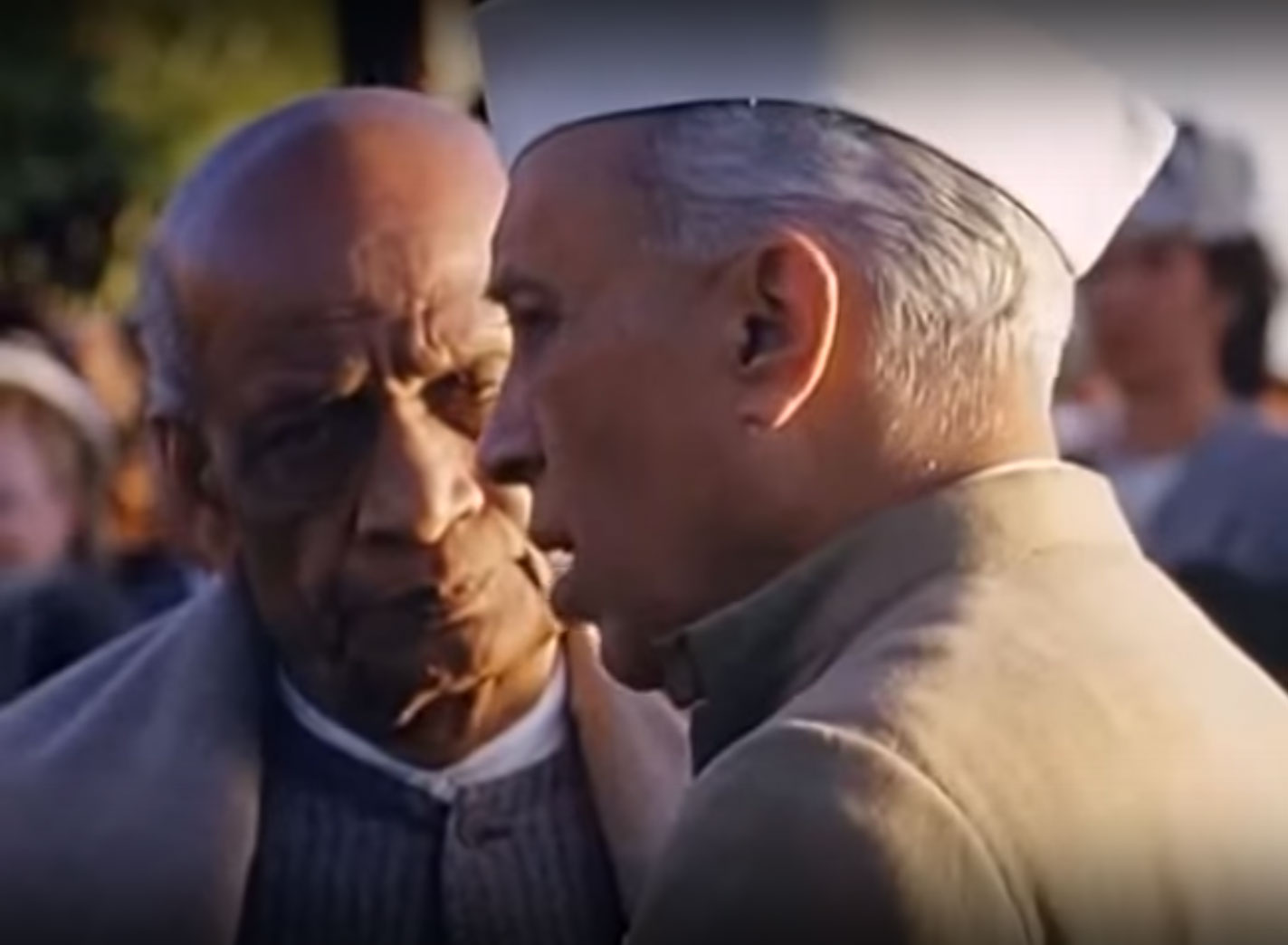
Having enjoyed mass support and having ruled the country, almost without challenge, for half a century, in the 80s Congress had started losing ground to the BJP. Not because BJP had any revolutionary economic or welfare programmes but merely for its openly anti-Muslim propaganda. The question then arises how was it able to sell its Islamophobic Hindutva ideology in 2014 to ordinary Hindu voters who had in the past voted against it?
Having been repeatedly rejected by the Indian voters since 1951, in its pre-reincarnation, known as Bharatya Jana Sangh, the coming to power of BJP in 1996 for 13 days, then, as a coalition, NDA, in 1998-99, and for a third term in 1999-2004 was a big achievement for a sectarian party. In the following years although it seemed to be losing public support and failed in capturing power in the centre; nevertheless it succeeded in forming governments in different states. Its victory in 2014 as the single largest party and its coming to power in some states has demonstrated its metamorphosis as a die-hard communal party and that has changed the political culture of India.
The causes of BJP’s sudden popularity in the 80s are very interesting because in the highly tense and communally charged atmosphere of early post-partition days it was much easier for a party like the Jana Sangh to exploit the prevailing extreme anti-Muslim feelings and win elections. It was much easier for the Hindutvaites to raise anti-Muslim hysteria in the 1950s because Muslims alone were considered to be responsible for the partition of the country.
However, the publication between 1970 and 1983 of secret and official documents (Transfer of Power 1942-47) that hitherto had been in possession of the India Office Library present a different picture of that period. In the light of these documents Gandhi, Nehru and Patel appear to be as much responsible for the partition as was Mohammad Ali Jinnah, founder of Pakistan.
Sardar Patel was fifty per cent in favour of partition even before Lord Mountbatten appeared on the scene. He was convinced that he could not work with the Muslim League. He openly said that he was prepared to have a part of India if only he could get rid of the Muslim League. It would not perhaps be unfair to say that Yallabhbhai Patel was the founder of Indian partition.
In India Wins Freedom Maulana Azad, the Congress president in the run up to the Partition, has given a detailed and shocking background of the tragedy. According to Maulana, ‘It must be placed on record that the man in India who first fell for Lord Mountbatten’s idea was Sardar Patel. Till perhaps the very end Pakistan was for Jinnah a bargaining counter, but in fighting for Pakistan, he had overreached himself. His action had so annoyed and irritated Sardar Patel that the Sardar was now a believer in partition…In fact, Sardar Patel was fifty per cent in favour of partition even before Lord Mountbatten appeared on the scene. He was convinced that he could not work with the Muslim League. He openly said that he was prepared to have a part of India if only he could get rid of the Muslim League. It would not perhaps be unfair to say that Yallabhbhai Patel was the founder of Indian partition.’
The paradox is that at one time Jinnah, who was hailed as the ambassador of Hindu-Muslim unity[1]’ had advised Gandhi not to bring religion into politics. In 1910 he even moved a resolution deploring the extension of a separate electorate to Muslims by the Minto Morley Reforms although he himself had been the beneficiary[2]. He had warned Gandhi not to encourage fanaticism of Muslim religious leaders and their followers by cooperating with Khilafat[3] (Caliphate) Movement. He accused Gandhi of creating schism and split: ‘… not only amongst Hindus and Muslims but between Hindus and Hindus and Muslims and Muslims and even between fathers and sons … in almost every institution’[4].
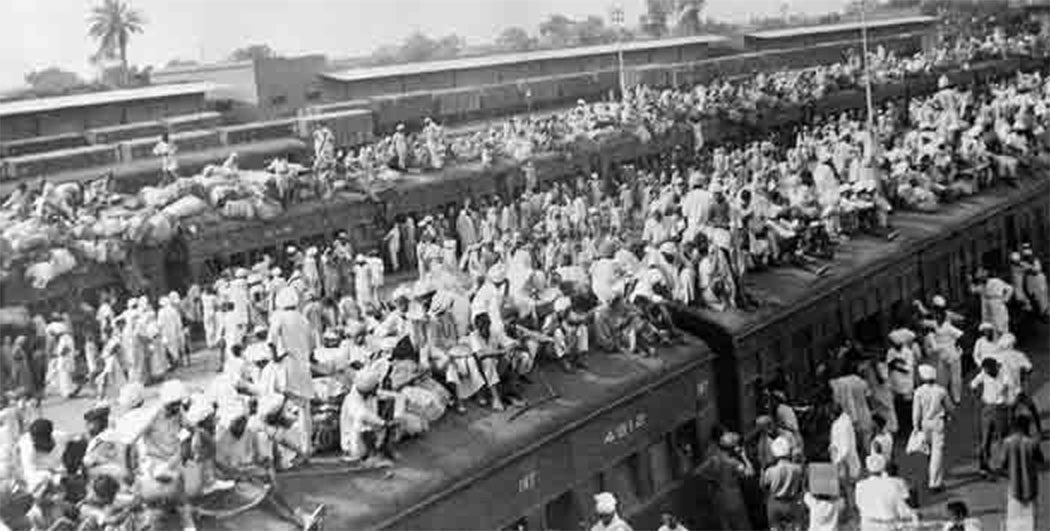
Gandhi’s reply to Jinnah was: ‘I claim that with us, both the Khilafat is the central fact, with Maulana Muhammad Ali because it is his religion, with me because, in laying down my life for the Khilafat, I ensure the safety of the cow that is my religion, from the Mussalman knife’[5]. The Veteran BBC journalist, Mark Tully, quotes Minoo Masani, who was a member of the Constituent Assembly in 1945: ‘… the majority of people, including Nehru and Patel, were impatient and wanted the Muslims to get out, so they could be masters in their own homes without any further delay. The egotism of Jinnah on one side, and Nehru on the other came in the way of a united India being independent…’[6]
At last opportunism played its role and divided the Indians. In 1947 a separate land for Muslims, Pakistan, was created and savage riots engulfed the region. There were wide incidents of loot, arson murder and rape. ‘Communal infection had spread to the common man, penetrating his mind so that he became temporarily a pervert. Cruelty for him turned into glory and treachery, arson, loot murder dishonouring of women, and killing of children became a moral imperative. The elemental passions of men were in action and Government and public organizations were very often helpless against their fury.’[7]
Within a decade of these events India successfully established itself as a secular liberal state. The country adopted a constitution envisaging for a secular state and setting up an independent judiciary. Despite some of its mistakes in dealing with the Muslim League[8], in the post 1947 era under Nehru’s leadership Congress remained a pluralistic and non-communal organisation.
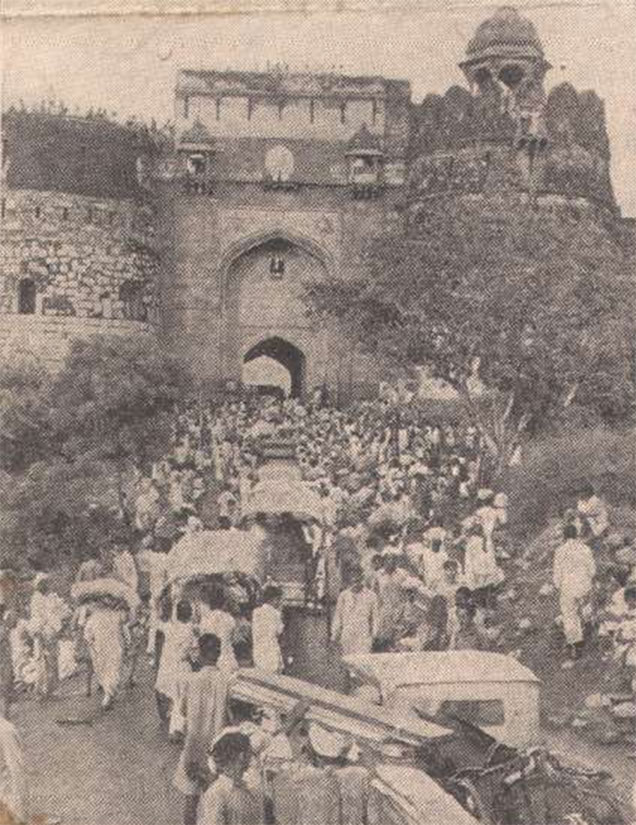
However, in spite of Congress’s central leadership’s commitment to the cause of secularism, the country could not rid itself completely of the communal legacy of 1947. From time to time anti-Muslim riots continued to take place, suspicion continued to be cast upon Muslims and discrimination against them in Government and private sectors remained widespread. But the communal hatred and violence of the 80s and 90s surpassed all previous records. Reporting from Delhi about the poisonous and tens atmosphere celebrated British journalist and writer William Dalrymple wrote, ‘In the German winter of 1929 it was the political failure of the Weimar Republic and the onset of hyperinflation that ushered in the rise of National Socialists Party. In the winter of 1990 a similar course of events has brought to prominence the Hindu fundamentalist Bharatiya Janata Party (or BJP). In the 1984 election the BJP took only two seats. Last year they took 88. When Chandra Shekhar’s rag-tag government falls (and few expect it to survive much beyond the spring of 1991, most commentators predict that the BJP will sweep the whole northern India… The man behind BJP’s rise to power is L.K. Advani… BJP’s revolution has been preceded by a mysterious distribution of tens of thousands of inflammatory cassettes… The cassettes openly encouraged anti-Muslim violence: ‘Our Motherland cries out for succour, cries out for martyrs who will cut the [Muslims] enemies of the nation to pieces’ says one I found in a market near my house. ‘We cannot suffer anymore the descendants of Babur [founder of the Mogul dynasty]. If this means a blood bath, then let there for once be a blood bath’… In Delhi drawing rooms fascism has become fashionable; educated people will tell you without embarrassment that it is about time the Muslims are disciplined—that they are dirty and fanatical, that they breed like rabbits. While chattering classes chatter, others take direct action. As I write, Old Delhi is in flames as Hindus and Muslims battle it out in the streets’. (The Spectator, 8 December 1990).
Why and how all of a sudden did the political wing of a fascist organisation, RSS, openly and shamelessly propagating violence against country’s religious minorities succeed in gaining such an unprecedented support in a country known for its secular ideals? Why all of a sudden did the masses whose memories of partition and resulting communal frenzy had begun to fade, fall prey to the BJP’s anti-Muslim propaganda? Was there something that the Congress had failed to deliver? To get answers to these questions we need to look at the different ideologies of the Congress leadership and the situation which led to the formation of Jana Sangh resulting in the 90s in BJP’s rise to power.
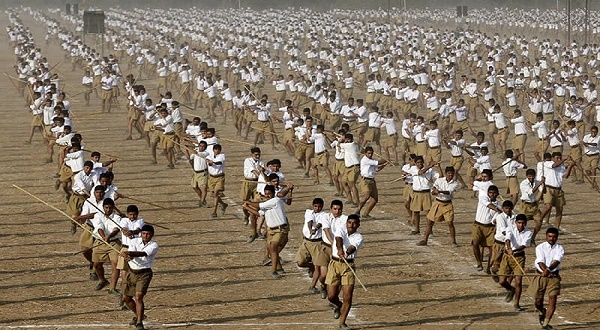
After independence Congress came to the helm of affairs of the country. During the long struggle for independence Congress’s leadership had successfully united Indians. Its leaders managed to absorb and reconcile a wide range of ideas. In 1947 among its ranks there were three important intellectual groups. One of them wanted to shape India into a liberal-democratic state with secular and democratic constitution; the second wanted to form a socialist state; and the third was working for the establishment of a state embodying Hindu traditions and values[9]. Since Congress had established itself in public life, these groups had two options: 1) remain in the Congress and exert pressure; 2) form a new party and isolate itself[10]. Even within the Hindu traditionalists there were serious differences in approach. However, they all looked towards the Home Minister, Vallabbhai Patel, for leadership rather than the Prime Minister, Jawahar Lal Nehru. Although both worked together closely, their differing ideologies made them incompatible. Nehru was committed to secularism while Patel looked upon Indian Muslims with suspicion, to such an extent that at a public meeting in Lucknow on 6 January 1948 he openly denounced Muslims for not condemning Pakistan’s activities in Kashmir: ‘It should not surprise Muslims if doubts were entertained about their loyalty. They could not ride on two horses. Those who were disloyal could not remain in India for the atmosphere would become too hot for them.’[11]
Issues in relation to the minority problem became more serious, complicating the problem of choosing, at the end of August 1950, the national president of the Congress. One of the candidates for the post was a veteran Congressman belonging to the Hindu traditionalist group, Purshottomdas Tandan. Nehru disapproved his candidature as unsuitable: ‘Unfortunately, you have become to large numbers of people in India some kind of a symbol of this communal and revivalist outlook and the question rises in my mind: Is the Congress going that way also? If so, where do I come into the picture, whether it is the Congress or whether it is the Government run by the Congress? … I feel that this election would mean great encouragement to certain forces in India which I consider harmful. Hence my difficulty and my distress.’[12]
Patel supported Tandon’s candidature and Nehru opposed him. However, in spite of Nehru’s opposition Tandon did win the election. Nehru refused to work with Tandon but was persuaded to reverse his decision. Later Tandon was forced to resign as president of the Congress. Things became worse in the wake of an agreement signed on 8 April 1951 in Delhi between Nehru and Pakistani Prime Minister Liaqat Ali Khan on the question of minorities in the two countries. A Hindu traditionalist and Minister of Industries and a former President of Hindu Mahasabha Dr Shyama Parsad Mookharji differed so much from Nehru on this agreement that he resigned from the Cabinet.
A Hindu party
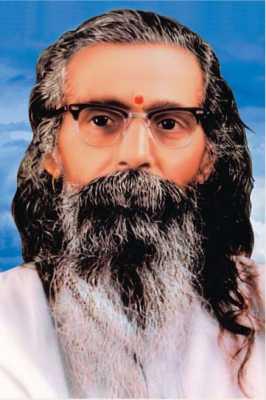
Although relatively a moderate Hindu, Dr Mookharji was so upset by the outcome of the Delhi pact that he proposed to the leader of RSS (Rashtriya Swayamsevak Sangh) Dr Mahadev Sadashiv Golwalkar to form a separate party for the Hindus. In his view the pact did not and could not achieve anything for the protection of Hindus in Pakistan.
The RSS was formed at Nagpur in 1925 by Dr Keshav Baliram Hedgewar, a former teacher at the Benaras Hindu University. Coming from Maharashtra, Hedgewar did not take his inspiration from religious traditions but from the Maratha war band led by Shivaji and his successors who fought against Mughal rule in India[13]. From its founding it has played an active role in anti-Muslim militancy in India[14]. It recruits youth volunteers (Swayamsevaks) and gives them martial training. Its aim is to form a Hindu Rashtriya (Hindu state) where, according to Golwalkar:
‘the foreign races … must either adopt the Hindu culture and language, must learn to respect and hold in reverence Hindu religion, must entertain no idea but those of the glorification of the Hindu race and culture i.e. of the Hindu nation and must lose their separate existence to merge in the Hindu race, or may stay in the country, wholly subordinated to the Hindu Nation, claiming nothing, deserving no privileges, far less any preferential treatment – not even citizens’ rights. There is, at least should be, no other course for them to adopt. We are an old nation; let us deal, as old nations ought to and do deal, with the foreign races, which have chosen to live in our country.’[15]
Otherwise:
‘German race pride has now become the topic of the day. To keep up the purity of the Race and its culture, Germany shocked the world by her purging the country of the Semitic Races – Jews. Race Pride at its highest has been manifested here. Germany has also shown how well near impossible it is for races and cultures, having differences going to the root, to be assimilated into one united whole, a good lesson for us in Hindusthan [India] to learn and profit by.’[16]
After Mahatma Gandhi’s assassination by Nathu Ram Godse, believed to have links with the RSS, the organisation was banned. Everyone was outraged except a few supporters of the RSS and Hindu Mahasabha who went to the extent of distributing sweets to celebrate the killing of a person whom they regarded to be too much pro-Muslim[17]. On that occasion Mookharji not only resigned from the Mahasabha but even accused the Hindu Mahasabha of communalism because it believed in establishing a Hindu Rashtra. Later when Mookharji proposed to Golwalkar to form a Hindu party, he told him that like Hindu Mahasabha the RSS believed in Hindu Rashtra too. However, Mookharji acknowledged that ‘he had made an inadvertent remark and expressed full agreement on the Hindu Rashtra ideal’[18].
Interested groups, including leaders of Hindu Mahasabha and RSS, were gathered in Delhi and on 21 October 1951 a new party for Hindus Bharatiya Jana Sangh (Indian Peoples Party) was formed with Mookharji as its president.
It is interesting to note that in Jana Sangh’s first manifesto there was no mention about the ‘liberation’ of places of worship which, in the 80s, became BJP’s only goal. This issue did not only give BJP a boost in popularity but also revived old sectarian hatred and L. K Advani’s Rath Yatras spread sectarian violence and sectarian hatred all over India. From Ram Mandir to Love Jihad, Ghar Wapsi and now Cow protection BJP leaders keep on changing their preferences depending upon what would polarise the atmosphere and what would make it win more Hindu votes.
By 1967 the Jana Sangh had reached to the peak of its popularity which had later faded by the elections of 1970. This defeat forced it to join other parties to offer a joint opposition to Mrs Gandhi’s Congress. During the emergency of 1975-77 like all the leaders of other parties, its leaders were arrested and imprisoned. After the lifting of emergency in April 1977 it was dissolved and merged with its allies to form the Janata Party which gave a humiliating defeat to the Congress. During this marriage of convenience the Jan Sanghis took maximum advantage and appointed their supporters and sympathisers at key posts in government departments[19]; and its General Secretary Atal Bihari Vajpaee was appointed as the Foreign Minister. By 1980 almost all of the Jana Sanghis had left the Janata Party and in April 1980 they formed the Bharatiya Janata Party (BJP).
It is interesting to note that in Jana Sangh’s first manifesto there was no mention about the ‘liberation’ of places of worship which, in the 80s, became BJP’s only goal. This issue did not only give BJP a boost in popularity but also revived old sectarian hatred and L. K Advani’s Rath Yatras spread sectarian violence and sectarian hatred all over India. From Ram Mandir to Love Jihad, Ghar Wapsi and now Cow protection BJP leaders keep on changing their preferences depending upon what would polarise the atmosphere and what would make it win more Hindu votes.
The Jana Sangh merely concentrated on economic issues. Parts of its programmes which referred to issues of concern to Hindu nationalists were relatively moderate[20]. And definitely far more moderate in comparison to BJP’s fascist campaign of the 80s.
Muslim Grievances
‘News that we here have received through American newspapers create a hope that the demand for India will be for a united one – May God also cause it so. Success in whatever the conditions is very difficult yet is necessary. May, after having travelled overseas, the [Hindu] Maha Sabhai mind-set change and Indians realise in true sense the [curse of] slavery that they are under. May they overcome their desire to dominate and subjugate one another and, instead, strive jointly together to free themselves from the slavery by others? May God inspire the Hindus and the Muslims to do justice with and treat each other fairly. May they abhor slavery so much that they neither accept to be slaved by others nor try to enslave others. Amen!
In addition to various other factors, Pakistan was the creation of Muslims’ fears that in a free India they would have to live under the majority (Hindu) rule. And these fears were not without a genuine reason. According to the well-known Indian journalist and the grandson of Mahatma Gandhi, Rajmohan Gandhi: ‘Congress … was ungenerous in that year1937. Blindness lay behind its failure to give Muslims a visible share in its ministries…The blindness was not new … as far back as the 1880s most Hindus associated with the Congress were unaware of Muslims’ fears of one man one vote … Congress’s inability to speak in an Indian rather a Hindu idiom gave a fillip to separatism.’[21]
Rajmohan Gandhi has been rather charitable in his reading of the aggressiveness of Hindu nationalists in the Congress. It was this aggressiveness that, much before Muhhamad Ali Jinnah, had shaken another Muhammad Ali and Gandhi admirer as early as 1924. Writes Maulana Majid Daryabadi ‘In [19]20-21 no one knew what Hindu-Muslim riots were. In the beginning of 1924 this epidemic had broken out with full force. This environment was just opposite to what Muhammad Ali had left at the time of going to jail. Each petty argument resulted into distrust and doubts. On one hand there was the rise of organisation of shudhdhi(conversion of non-Hindus to Hindus) programmes on the other hand it was responded to by calling preaching groups. A discussion starting with politics always ended on dharam and Iman [religion and faith]. Everyone was waiting for Gandhiji’s release and see what panacea he would use to treat this poison. At last Gandhiji was released in March and in May his full statement was published in his weekly Young India…
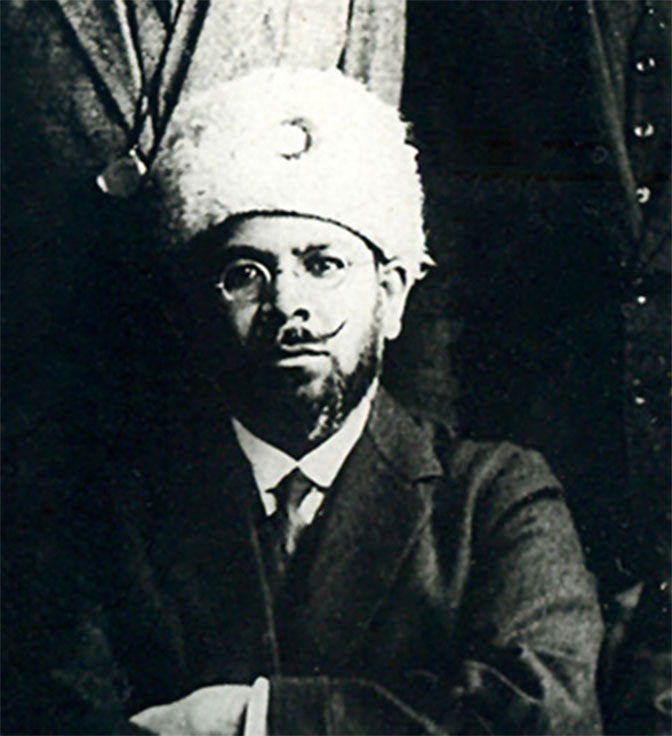
‘…Someone brought a copy of Young India. The Maulana was eagerly waiting for this and quickly read all of it in one sitting. But he was not much pleased. I do not remember the details but I do remember that Maulana was furious at some of the advisors and close associates of Gandhiji. He was not generally happy with them. Of all the Hindu leaders he admired two personalities: Pundit Jawaharlal Nehru (not his father Motilal) and the other Madrasi President of the Congress Srinivasa Iyengar. Rest of them he believed to be lacking in intelligence and understanding or fanatic extremists. Some of them he used to regard as blatantly dishonest and insincere[22].’
Writing from London to his daughter, 6 November 1930, Maulana concluded a long letter with this prayer:
‘News that we here have received through American newspapers create a hope that the demand for India will be for a united one – May God also cause it so. Success in whatever the conditions is very difficult yet is necessary. May, after having travelled overseas, the [Hindu] Maha Sabhai mind-set change and Indians realise in true sense the [curse of] slavery that they are under. May they overcome their desire to dominate and subjugate one another and, instead, strive jointly together to free themselves from the slavery by others? May God inspire the Hindus and the Muslims to do justice with and treat each other fairly. May they abhor slavery so much that they neither accept to be slaved by others nor try to enslave others. Amen![23]‘
In another letter, dated 26 December 1930, he wrote:
‘The Hindu-Muslim problem all over India is one, it is national and historical. It’s not provincial. It should be decided on the basis of principles everywhere. And the principle is that where there are Muslims in majority all the power should be given to them and the same should be for the Hindus i.e. Power of Majority whether the majority is 5 to 4 or 45 to 40 with the assurance of the protection of minority. The tragedy however is that by putting Sikhs and the English as an excuse in Punjab and Bengal Muslim majority is being made as a minority….
To give a better idea to the readers of the undercurrents of rising sectarianism in those days it won’t be out of place to produce an excerpt from a long speech of Maunala Muhammad Ali Jauhar from his last and famous, ‘If you do not give us freedom in India you will have to give me a grave here‘ speech delivered at the fourth plenary session of the Round Table Conference in London, 19th November 1930:
‘The real problem which is upsetting us all the time has been the third problem–this Hindu-Muslim problem; but that is no problem at all. The fact is that the Hindu-Muslim difficulty, like the Army difficulty, is of your own creation. But not altogether. It is the old maxim of “divide and rule.” But there is a division of labour here. We divide and you rule. The moment we decide not to divide you will not be able to rule as you are doing today. With this determination not to be divided, we have come here. Let me assure every British man and woman who thinks of shaping our destinies that the only quarrel between the Hindus and the Muslims today is [the] quarrel that the Muslim is afraid of Hindu domination and the Hindu, I suppose, is afraid of Muslim domination. (Dr. Moonje: No, the Hindu is never afraid.) Well I am very glad to hear that. In my country the she-buffalo attacks only when she is afraid; and whatever the reverence of the Hindu for the cow, I am glad he has never the fear of the she-buffalo. I want to get rid of that fear. The very fact that Hindus and Muslims are quarrelling today shows that they will not stand British domination either for one single minute. That is the point to grasp[24].’
Interestingly Indian Express, 3 November 2015 carried an article in which it quoted RSS mouthpiece Rashtra Dharma as having claimed that Sangh ideologue Deendayal Upadhyaya was against ‘Hindu-Muslim unity’ and believed that issue of ‘unity’ was ‘irrelevant’ and appeasement of the Muslims.
Although on the assurances of Maulana Abdul Kalam Azad and Jawahar Lal Nehru that they would be safe, a large number of Muslims decided to stay in India[25] yet social justice and security for them remained and still remains a dream. The generation that is accused of partitioning the country is a part of history yet Hindutwaites, who are present there in almost all the parties, do not hesitate in taking advantage of the political blunder of partition. This situation has not let the Indian Muslims think positively about their meaningful role in India. Besides a general demand for job opportunities in police and other government departments since 1947, Muslims have not been allowed to think beyond: 1) protection of Muslim Personal Law; 2) recognition of Urdu as a second official language; 3) the minority character of Aligarh Muslim University (AMU); 4) in 1986 the additional problem of the protection of the Babri Mosque; 5) and most recently the addition of the alleged involvement in terrorism of Muslim youths. However, here we will briefly look at the first four points.
Muslim Personal Law

Interestingly in 1947 while an anglicised Muhammad Ali Jinnah-led Muslim League opted for an independent Muslim land, an organisation like Jamee’atul-ulma-e-Hind (League of [Muslim] Theologians of India), associated with the famous seminary of Deoband opposed the creation of Pakistan and supported the Congress. In addition to other factors the reason why Jamee’at had supported the Congress was that it had been assured that the Congress would protect Muslim Personal Law (Shari’ah).
As such there is no provision for a separate Muslim law in the Indian constitution. On the contrary, Article 44 of the Indian constitution directs the State to secure a uniform civil code for all the citizens. Muslims’ contention has been that the right to freedom to practise their religion is meaningless without being able to be governed by Muslim family law[26]. Even in British India, they argue, suits regarding marriage, divorce, inheritance, wills, legacies, adoption etc. were decided in accordance to Muslim law. At the time when Indian constitution was being framed, Muslim members of the Constituent Assembly debated against Article 44 (then 35) – so much so that the author of the constitution Or A. R. Ambedkar had to assure them:
‘ … no one need be apprehensive of the fact that if the State has the power, the State immediately proceeds to execute or enforce that power in a manner that may be found to be objectionable by Muslims or by Christians or by any other community in India. We must remember—including members of the Muslim community who have spoken on this subject — that sovereignty is always limited … because sovereignty in the exercise of that power must reconcile itself to the sentiments of different communities. No Government can exercise its power in such a manner as to provoke the Muslim community to rise in rebellion. I think it would be a bad government if it did.’[27]
Since 1947 cases related to matrimony, inheritance, wills and adoption are being decided in civil courts in accordance to the Shari’ah. However, the legal ambiguity of this issue was highlighted in the controversial Shah Bano case during 1987 in which civil courts awarded alimony to a divorced Muslim woman. The decision provoked countrywide demonstrations and protests by Muslims. Commentators on Indian politics believe that the then Prime Minister Late Rajiv Gandhi surrendered to Muslim opinion and passed the Muslim Women (Protection of Rights on Divorce) Bill[28]. As such the bill did not, nor was it meant to, solve the problem.
From time to time pro-uniform-civil code sections, including the Indian judiciary keep on reminding the Government of its responsibility to implement a Uniform Civil Code in India while no one seems to have an idea what a Uniform Civil Code would be and what it would entail. This demand has to do more with politics than the desire to solve any real or assumed problem. And each time this demand is raised opportunism and mischief of those who are making the demand is exposed. Here is a classic example of this. Reminding the Central Government of its longstanding constitutional demand in May 1995 the Supreme Court asked it to enact a uniform civil code[29]. Taking advantage of the situation and general election approaching L. K. Advani announced that then the four BJP ruled states would on their own introduce a Common Law[30].
Although BJP state governments did not have the power to do so because according to Article 254 of the constitution no state bill that is ‘repugnant’ to a Central Law can come into force without President’s sanctions, BJP then was thinking to make Muslim Personal Law a focal point of its campaign. Arun Jaitley, then a member of BJP’s national executive, said, ‘We will be too happy if the political situation so develops that the Congress (I) Government (is seen) in the company of fundamentalists while we are on the side of gender equality and the right to live with dignity.[31]‘
Any interference in Muslim Personal Law is rightly seen by Muslims as an attack on their existence, individuality and identity. The BJP on the other hand has always used it as an example of preferential treatment being given to Muslims by the government. However, unfortunately, Muslim leadership has not shown any practical willingness to protect the rights of Muslim women enjoined by the Qur’an. It is also interesting to note that the movement launched by the Jamee’at in the 1920s was in fact directed towards protecting Muslim women’s rights. For example in its sixth annual session in 1925 the Jamee’at had adopted a resolution declaring, ‘ … as an insult to the Shariat the adherence by certain Muslims to the non-Islamic laws based on customs and usage (like) excluding women from inheritance … ‘
The Question of Urdu
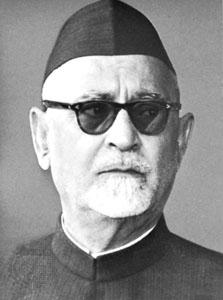
Urdu, an Indo-Arian language evolved in the Mughal era and became the lingua franca of the country. Its evolution is attributed to the interaction of different ethnic groups in that period. With strong Persian and Arabic flavour it is based on Hindi. It was equally popular among Hindu and Muslim elites[32]. In the words of Maulana Muhammad Ali Johar, ‘Did Muslims bring Urdu from Arabia or Persia or Afghanistan? No it was in the Indian camp and market-place that they picked it up and eighty percent of the words used in their daily intercourse are such as will have no meaning for an Arab or Persian or a Turk or an Afghan …’[33] However, by 1867 Hindus started seeing it as a Muslim language in which most of the Indian Islamic literature and Muslim history had been written.
As partition of the country came, Urdu was replaced by Hindi. Recognition of Urdu in any sense was seen as a concession to Muslims although according to 1971 census in UP Urdu speakers in UP were recorded as 10.5%, 8.8% in Bihar, 7.5% in Andhra, 9.0% in Karnataka and 7.2% in Maharashtra.
After several movements all over the country, (including a signature campaign led by Dr Zakir Husain, who was to become President of the country in 1967) in 1972 Mrs Indira Gandhi appointed a committee for the promotion of Urdu known as Gujral Committee. The committee presented its report in 1975 recommending the establishment of Urdu medium primary schools where the population of Urdu speakers in an urban or village exceeded 10%, enforcement in Hindi speaking states of a three language formula for the schools, which would include Urdu as compulsory along with Hindi and English[34].
The report was suppressed on the insistence of senior cabinet member Jagjivan Ram[35]. As a result of government discriminatory policies the enrolment of Urdu speakers in primary schools and the publication of Urdu newspapers sharply decreased.
Aligarh Muslim University
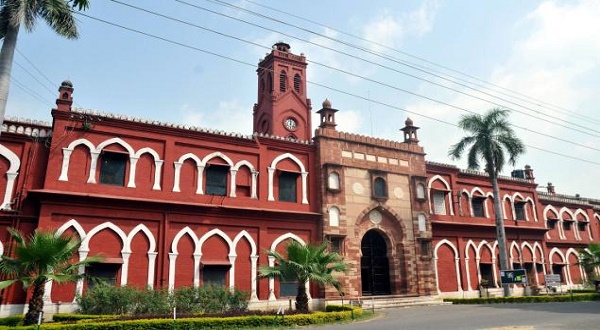
AMU (then MAO College) was founded by Sir Syed Ahmed Khan in 1877 for the educational upliftment of Indian Muslims. In 1920 it was granted the status of a University through Aligarh Muslim University Act 1920 which provided for the compulsory religious education of the students, a residential character, and administration by Muslims. In 1951 through an amendment Act the original charter was changed in all three aspects. This move was in clear violation of Article 30 (1) of the Indian constitution which says:
‘All minorities, whether based on religion or language, shall have the right to establish and administer educational institutions of their choice.’ It should be clear here that the AMU is not a theological institution. Even at the time when this bizarre action was taken by the government, there was a sizeable number of Hindus in staff and students.
When Muslims brought the case in the court, ignoring a historical fact, the Supreme Court held that the AMU was not founded by the Muslims but came into being through an act of the Parliament. In 1965 another Amendment Act was passed which threatened the autonomy of the institution. It triggered Muslim agitations all over the country. In order to win back Muslim votes Mrs Gandhi brought one more Amendment Act in 1972 but it served no purpose. In the 1981 Amendment Act, however, the minority character of AMU was explicitly recognised, satisfying Muslim opinion.
Babri Mosque and Competition for Hindu Votes

Until 6 December 1993 there stood a historical mosque in Ayodhya in the Northern Indian state of Uttar Pradesh known as Babri Mosque. The Mosque was built by Mir Baqui, a General of the Mughal Emperor Babar, in 1528 to mark the conquest of Mughal Army over the Pathan King Sikandar Lodhi, a Muslim. According to the Hindutwaites, however, the mosque was built after demolishing a Hindu temple that had existed there since the eleventh century AD. There is no evidence in history that any temple existed on the site of this mosque. A joint report submitted in 1991 to the Minister of State for Home Mr S. K Sahay by four well-known historians concludes[36]:
- No evidence exists in the texts that before the 16th century (and indeed before the 18th century), any veneration attached to any spot in Ayodhya for being the birth place of Rama.
- There are no grounds for supposing that a Rama temple, or any temple, existed at the site where Babri Mosque was built…This conclusion rests on an examination of the archaeological evidence as well as the contemporary inscriptions on the mosque.
- The legend that the Babri Masjid occupied the site of Rama’s birth did not arise until the late 18th century; that the temple was destroyed to build a mosque was not asserted until the beginning of the 19th century…
- The full-blown legend of the destruction of a temple … is as late as the 1850s. Since then what we get is merely the progressive reconstruction of imagined history based on faith.
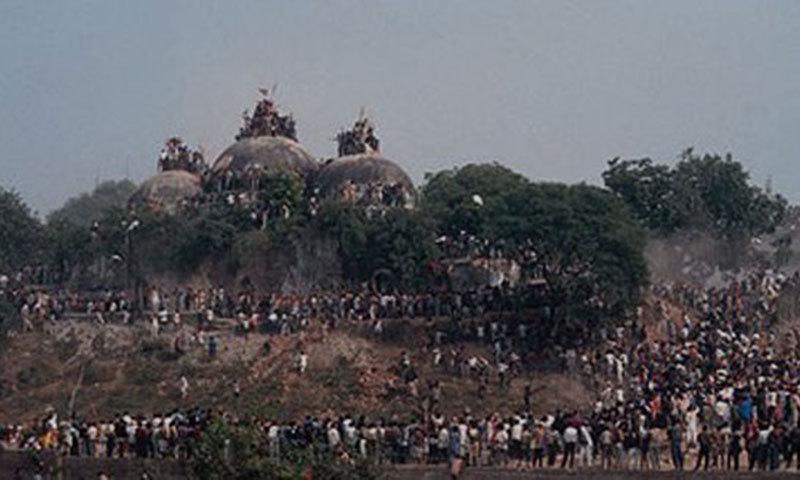
The BJP /VHP /RSS would not accept any argument based on historical evidence or legal grounds. Hindu leaders including the ‘moderate’ Atal Bihari Vajpayee made it clear that the issue could not be solved by the courts and that Muslims should hand over the mosque to the Hindus.
How did it all start? Soon after partition, taking advantage of Muslims’ demoralisation and their miserable situation on the night of 22-23 December, a group of Hindu youths entered the mosque and installed the idol of Rama. This act was done in the presence of policemen who had been posted there after an earlier assault on the mosque on 13 November 1949. The man, a Hindu priest and then General Secretary of District Faizabad Congress Committee, Akshay Barharamchari, because of whose initiatives a first conspiracy to install idols inside the mosque was foiled, was attacked and beaten in his house for speaking the truth. However, after the installation of the idol, the next day rumours spread in the town that Lord Rama had appeared to claim his temple. Riots that followed the incident were quelled. The District Magistrate, K.K. Nair, with whose complicity idols were brought, refused to remove them. Nor were the real culprits punished. One of them, Abhot Ram Chander Das, in an interview to the New York Times of 22 December 1991, confessed that he was one of those who had put the idol inside the mosque. However, as he neared his retirement, Mr K.K. Nair admitted his complicity in the affair and was made to resign only to become a martyr and be elected as a Jana Sangh MP.[37] While a title suit pended in the High Court from 1948 to 1986 the mosque continued to be used as a temple, worship went on and Muslims were prohibited from entering it and had to keep clear up to a radius of 200 yards.
A case regarding the Babri Mosque-Rama Janam Bhoomi dispute had been pending in Allahabad High Court for 37 years. Until 1 February 1986 the Babri Mosque-Rama Janam Bhoomi dispute, was a local issue. Very few Indians knew or were interested in it. As Peter van der Veer observes: ‘I regularly visited Ayodhya from 1977-1984. The disputes seemed to have more to do with who among the monks would receive which part of the donations than with any attempt to launch an attack on the mosque[38].’
In 1984 Vishva Hindu Parishad, founded by one of Mrs Indira Gandhi’s most trusted friends, Dr Karan Singh, started a campaign for the liberation of Rama’s birth place (Later Rajiv Gandhi sent Dr Karan Singh as India’s Ambassador to the USA). On 19 December 1985 a Hindu delegation comprised of some retired officials met the then state Chief Minister Mr V.P. Singh and warned him that unless the ‘Temple’ was handed over to them by 8 March they would launch a mass movement and forcibly occupy it.
The general view is that by passing the Muslim Women (Protection of Rights on Divorce) Bill in 1986 Rajiv Gandhi realised that he had alienated Hindu voters. The fact is, however, that the Muslim Women Bill was a sequel to the pressure mounted by Hindu organisations[39]. So Rajiv Ghandi tried to please them by having the Mosque opened for Hindu worship.
According to the BJP’s former Vice-President and editor of RSS’s weekly organ Organiser, the late K.R, Malkani, ‘The authorities informally asked the VHP to move an application for the unlocking of the premises, with assurances of positive response. But the VHP said it was interested in the unlocking and not in going to court. So Congress got a junior local advocate, one Omesh Chand Pande, to move an application on January 21 in the Munsif court. On January 28 the Munsif declined to pass any orders. An appeal was, therefore, immediately filed in the court of District Judge … The Court thereupon ordered on 1 February that the locks be removed …’[40]
It was at this juncture that the Temple(s) liberation campaign was taken over by the BJP[41]. The BJP transformed a local dispute into a symbol of a threatened majority. And from here Advani and Rajiv appear to be in competition in establishing a monopoly on Hindu vote.
In a second move in 1989, Rajiv started his election campaign from Faizabad barely 6 kilometers from Ayodhya. There he announced his conviction in establishing Ram Rajya (Hindu state)[42]. However, when in power he allowed the VHP to lay the foundation stone of the proposed temple[43] flaunting orders of the Allahabad High Court which, on 8 November, had declared the place as disputed. According to Malkani: ‘Union Home Minister Buta Singh’ had ‘even suggested that Rajiv’ might ‘be available for foundation laying’[44].
One of Rajiv Gandhi’s former associates and a ministerial colleague Arun Nehru says, ‘When I asked Mr Rajiv Gandhi who is showing the worship in the disputed shrine at Ayodhya on Door Darshan [Indian TV] two days after it was unlocked, he did not reply; he merely smiled and observed it was tit for tat for the Muslim Women’s Bill’[45]
On 6 December 1992 the Babri Mosque was demolished by 5000 kar Sevaks (Hindu volunteers) in the presence of 25,000 central paramilitary personnel. These forces equipped with stun grenades, rubber pellets and rubber bullets just stood there as mute spectators to vandalism and mockery of law[46]. Writes Malkani: ‘Advani’s own feeling is that the P.M. advisers—whether in the PMO, Ayodhya Cell or the Intelligence Bureau — had advised him that a showdown was inevitable and it was better to have it now rather than later, close to the next elections. This feeling is confirmed by the fact that between November 18 and December 6 the P.M. [Narasimha Rao] made no contact with Advani[47].’
Malkani even says that at Advani’s son’s wedding Mr Rao had asked RSS’s late Chief Balasahib Deoras to let him know about their plans when they decided to demolish the Mosque[48]. The late Malkani was an RSS trained BJP vice-president. This group is known for spreading disinformation and are Masters of Deception. So whatever has been quoted above from his book has to be taken with a pinch of salt. After all, he had been the editor of Organiser which in its issue of 24 September 1989 informed the readers that ‘on the historic morning of 23 December 1949 the idol of Sri Ramachandra and Sita Devi miraculously appeared in the Janamasthan[49]‘. [birth place of Rama]
However, what is more revealing is India Today’s claim in its 31 December issue that Mr Rao was getting all the information from Ayodhya and was being advised by his trusted colleagues to take action. But he did not take any notice of this advice. In his book Beyond the Lines veteran journalist Kuldip Nayar reconfirms this: ‘My information was that Rao had connived at the demolition. He sat at puja when the kar sevaks began pulling down the mosque and rose only when the last stone had been removed
‘Madhu Limaye (late socialist leader) later told me that during the puja, Rao’s aide whispered in his ears that the masjid had been demolished. Within seconds, the puja was over.’[50]
Muslims Betrayed
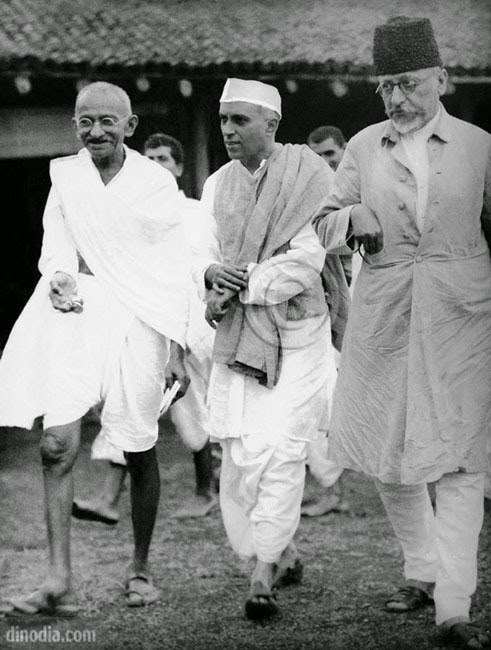
Post-Independence, Indian Muslims gave their allegiance to the Congress. They saw Congress’s secularism and philosophy of pluralism as the only chance of survival. A majority of Hindus on the other hand saw Congress as a Hindu party[51]. Apart from Nehru and of course Muslim leaders like Maulana Abul Kalam Azad and Rafi Ahmed Kidwai, a great number of its leaders openly opposed each and every demand from Muslims. Interestingly the first attack on Muslims’ fundamental constitutional right came in 1951 when AMU was deprived of its minority character. And this occurred during the premiership of a committed liberal secularist like Jawahar Lal Nehru, the education ministry of a Muslim like Abul Kalam Azad and the vice-chancellorship of Dr Zakir Husain. This move alone would have been sufficient to convince the Hindu voters that Congress was a Hindu party in whose government Muslim ministers would be just show pieces.
Only one year after the death of Nehru, his daughter Indira Gandhi became the Prime Minister. She too claimed to be a liberal secularist but did not hesitate in using religion, pushing Punjab into turmoil by creating a terrorist like Bhindranwale.[52] It was she who continued to deny a fair election to the Kashmiris and provided legitimacy to the separatists. During her eight years’ rule she used secularism and religion alike, as it suited her. During her notorious Emergency Period it was the Muslim community that suffered most. To quote Tariq AIi: ‘The demolition of Muslim houses in the areas around the old Jama Masjid (Mosque) in order to ‘clean up’ Delhi for the property speculators sealed the fate of Emergency. The president of India, a Muslim, personally pleaded with Sanjay to go slow. He was ignored. Sheikh Abdullah, the veteran Kashmiri Muslim leader, came to Delhi, pleaded with Mrs Gandhi to intervene on behalf of Delhi’s Muslims and prevent this humiliation. He was effectively ignored … Jag Mohan, the Vice Chairman of the Delhi Development Authority, a Chamcha, a rogue and a communalist sneered at one deputation: ‘so you want to create a mini Pakistan in the heart of Delhi’[53].’
In each of her election manifestos Indira Gandhi gave assurances to Muslims about the minority character, the status of Urdu and job opportunities. But when in power she would forget all her promises. The result was that ordinary Hindus got the impression that it was to their cost that Muslims were being given undue preference. The fact, however, is that, as Mark Tully puts it ‘During her last period in office … Mrs Gandhi … tried to forge the Hindu community into a solid vote block … The catalyst for this new political synthesis was the Hindu revivalism sweeping through India[54].’
It seems rather odd to quote BJP’s spokesperson M. J. Akbar from the days when he was known for his honesty, objectivity and fearlessness and who, after joining the Congress and now BJP, has destroyed his credibility for ever. Nevertheless this is what he wrote, ‘Hindu revivalists began saying that in Hindu-Majority India it was Hinduism, not Islam that was now in danger … Mrs Gandhi often displayed an anti-minority instance. She kept hinting that the Muslims in India had still not given up their destructive games; there was always talk of a ‘foreign conspiracy behind any problem related to Muslims[55].’
In 1978 the Janata Party government, led by late Prime Minister Murarji Desai, set up a Minorities Commission. Two years later a committee was set up to study the minorities’ condition. In 1983 Mrs Gandhi unveiled a programme that promised more jobs and easier loans to the Muslims. But what happened afterwards? Gopal Singh’s report was suppressed until it was released by V.P. Singh. According to India Today: ‘The status of the Muslims became the best guarded secret in the country. And an ideal target for propaganda.’[56]
Indeed in Congress’s governments Muslims have been appointed as ministers but they were of no use to the Muslim community. They were not supposed to speak against injustice. Muslim education ministers and presidents could not utter a single word on the abolition of the minority character of the only educational institution of its kind. How helpless a Muslim minister can be on Muslim issues and what is expected of him on these problems is obvious from an article by the then Deputy Commerce Minister, Mr Salman Khurshid, the grandson of the first Muslim President of India Dr Zakir Husain. In the wake of the demolition of the Babri Mosque he writes:
‘I am constantly being asked to respond to unprecedented vandalism as a “Muslim”. This comes from sympathisers and detractors alike. Why are the Muslim ministers silent? Why are the Muslim ministers refusing to give up their cursis [posts]? … On Shah Bano, AMU and Jamia they questioned the right of Muslim ministers and MPs to speak. They were called to resign because they spoke. Today they are called upon to resign because they are not speaking! Read between the lines: Muslims must speak only to destroy themselves and their country[57].’
One can agree with Salman Khurshid’s initial comments but his excuse not to protest and not to speak against injustice is sad and a sign of weakness. Of what use are Muslim candidates if they cannot even raise their voices against injustice and unfairness?
The worst anti-Muslim riots broke out during Congress’s governments in which police went berserk but there is not a single shred of evidence that any Muslim minister or MP from the ruling Congress Party ever condemned it or any officer involved in these incidents was punished.
Despite its Hindu stance, the Jana Sangh was unable to attract the Hindu vote because there was nothing that the Jana Sangh was promising that was not being offered by the Congress. In 1948 Congress government in UP had idols installed in a mosque and converted it into a temple. In 1950 a Union Cabinet Minister K.M. Munshi started a campaign to rebuild the famous temple of Somnath destroyed by Mehmood Ghaznavi. As such there was nothing wrong with the rebuilding of the temple and fulfilling the dream of the Hindus. What was significant was the use of words by K.M. Munshi and the Home Minster Vallabbhai Patel. They both saw this act as a symbol of the revivalism of Hinduism. The funds for the building of the temple were provided by the Congress-led government of India and on 11 May 1950 the president of India inaugurated the temple. Compare this action to the refusal by successive Congress governments to allow Muslims to pray inside the mosques—so called ‘protected monuments’ — of which 300 are in Delhi alone.
Thus, on all the issues the Jana Sangh failed to defeat the Congress. When the Jana Sangh was revived in 1980 again it did not have any more drastic promises to offer to the Hindus. However, when the temple liberation movement, initially launched by the VHP, was taken over by the BJP and Congress appeared to be losing ground, Rajiv had the doors of the occupied mosque opened for Hindu worship. Then he promised the establishment of a ‘Ram Rajya’. He even allowed the laying of the foundation stone of the proposed temple on the land of Muslim Waqf Board (Muslim Trust) misappropriated by the BJP in violation of Court orders.
But Rajiv, son of a Zoroastrian father, brought up in the Westernised Nehru family and married to a Catholic, was not to be taken seriously by the Hindus. He could not be more Hindu than the high caste leaders of the BJP. He was losing.
After Rajiv’s death it was Prime Minster Narasimha Rao’s turn to dance to the tune. He too could not counter the Hinduness of the BJP leaders. By now innocent people had been brainwashed. He kept fiddling while the Babri mosque was burning; this fire also burnt the houses of Muslims in several other cities. Rao did not bother to visit any of these places. He, however, did promise to rebuild the mosque. Why? He told India Today that he did not want to wait until the then Pakistani Prime Minister Nawaz Shareef had done so. Meanwhile, BJP became confident that it was ready for a general election in the country. While his party already had more than five thousand mosques in its list to demolish, Advani asked the VHP to go ahead and prepare for the mosque of Kashi. Of course Congress could not play a more Hindu card than this.
BJP’s rule in 1998-99, and in 1999-2004 and then as an opposition party gave its voters the chance to see that its leaders were in no way better and no less corrupt than any other party in India. By 2009 voters had seen the ugly face of BJP and duly showed the saffron brigade the way out.
But beginning 2002 to 2014 saffron terrorists had carried out several experiments in Gujarat, the ‘laboratory of Hindutva.’ Narendra Modi knew that unlike as the Chief Minister of Gujarat, as a Prime Ministerial candidate not only would he be being watched by the world but to win the elections he would need the votes of non-Hindus and low caste Hindus. So they made a perfect arrangement. While Modi kept talking of ‘achche din’ and showed sweet dreams to the voters, his left-hand man and master campaigner Amit Shah was given the task of polarising the environment, a job he did with full perfection. ‘A man can live without food or sleep. He can live when he is thirsty and hungry. But when he is insulted, he can’t live. The humiliation has to be avenged’. He told Hindu voters in Muzaffarnagar. So hate-filled is this man that during a rally in Kolkatta when he heard Azan, Muslim call to prayer, to everyone’s surprise, he stopped his speech. But this was not to show respect for Islam or Muslims. ‘It will take only two minutes. I understand your feelings.’ He told his slogan chanting audience, ‘I don’t want to give Mamta Didi any excuse otherwise she won’t let us organise any rally.’
Having benefited from polarisation in Gujarat and then in 2014 parliamentary elections Modi and Amit Shah know that each riot wins BJP votes. So there is a complete and well thought out division of labour between Modi, Amit Shah and their firebrand MPs and MLAs according to which while Modi would talk of sab ka saath sab ka vikaas, Amit Shah and co will continue making hate speeches and engineer riots.
Until recently life in Indian villages was rather peaceful and villages were free from the curse of sectarian violence. This menace was limited to cities. But during the last few years BJP has managed to polarise village life and today most of them are tenser than cities. While Muslims are BJP’s main target Dalits and other backward communities, as recent reports of atrocities on Dalits show, are not safe. What goes up must come down is an old saying. Sooner or later Indians will wake up and see the damage BJP has done to Indian society. The other day Sambit Patra was showing his anger in a live TV programme in which Urdu poet Munawwar Rana returned his Sahitya Akademi award. ‘I am appalled…when such big personalities try to defame the country on big channels internationally. Is this news not going outside India? Has the atmosphere of the country worsened so much that no one can write or say anything?’ Mr Patra also called the returning of awards by academicians, writers and poets as ‘manufactured revolt.’
Does the country not get defamed, Mr Patra, when your party puts forward the name of a mass murderer, denied entry in many countries, as a prime ministerial candidate and the country elects him? Does the country not get defamed when instead of punishing criminal elements involved in riots and killings your party rewards and promotes them? Does the country not get defamed when a Dalit woman is stripped naked and Dalit children are burnt alive? Does the country not get defamed when the lynching by your party men of Muslims get reported in foreign press not only for being accused of keeping beef in their fridges but also for merely transporting cows? Interestingly Modi is the only Prime Minister who has spoken against previous governments on foreign lands. Did the country not get defamed then?
The problem with saffron brigade is that they think they have a monopoly on patriotism and not only Muslims but everyone else who disagrees with them is a traitor and conspirator against the country and in their definition of patriotism therefore one should willingly accept subjugation and humiliation. They have been working to impose fascism on India since 20s. Within 18 months of coming to power Modi and his saffron brigade have inflicted unspeakable damage to social and political environment of the country. He has four more years to go and one shudders to think the impact of saffronisation that will be done during this period. The sad fact is that there is no challenge to them. For fear of losing Hindu votes no party will be able to counter the poison that will have polluted each and every department during this time. The only way now available is a strong alliance between Muslims, Dalits and backward castes but in the absence of a credible leadership—a crisis Muslims and Dalits suffer alike— such an alliance and cooperation looks like a dream.
This article is being serialised in Daily Jadid Khabar first instalments of which appeared on 4 December 2014
[1] Singh Anita Inder, The Congress and the Hindu Muslim Problem, published in the Indian National Congress Centenary Highlights edited by D. A. Low. Oxford University Press. Delhi 1988
[2] Jalal Aisha, The Sole Spokesman. Cambridge University Press, Cambridge. 1994
[3] Seervai H.M. Partltion of India Legend and Reality Tripathi Private Ltd. Bombay 1994
[4] Jalal Aisha, The Sole Spokesman. Cambridge University Press, Cambridge. 1994
[5] Ibid quoted from Young India of 20 October 1921
[6] Tully Mark and Masani Zareer, From Raj to Rajiv, BBC Books. London 1988
[7] Indian National Congress, Congress Bulletin (Allahabad) 31 December 1947
[8] In his autobiography India Wins Freedom Maulana Abul Kalam Azad gives a detailed account of Nehru’s mistakes which foiled last attempts to avoid partition.
[9] Graham B. D. Hindu Nationalism and Indian Nationalism, Cambridge University Press, Cambridge 1990
[10] Ibid
[11] Ibid, quoted from Hindustan Times (Delhi, 7 January 1948) and National Herald, Lucknow, 7 January 1948)
[12] B. D. Graham, The Congress and Hindu Nationalism, published in The Indian National Congress, edited by D. A Low (Oxford University Press, Delhi, 1988)
[13] Veer Peter der Religious Nationalism, University of California Press, London, 1994
[14] Ibid
[15] Golwalkar Madhav Sadashiv We; or, Our Nationhood Defined, Nagpur 1939
[16] Ibid
[17] Azad Abul Kalam, India Wins Freedom, Orient Longman, Madras, 1988
[18] Graham B. D. Hindu Nationalism and Indian Nationalism, Cambridge University Press, Cambridge 1990
[19] Ali Tariq, Nehrus and Gandhis, Picador, London 1991
[20] Graham B. D. Hindu Nationalism and Indian Nationalism, Cambridge University Press, Cambridge 1990
[21] Gandhi Rajmohan Understanding the Muslim Mind, Penguin Books, 1990 Delhi
[22] Daryabadi Maulana Abdul Majid, Muhammad Ali: Zati Diary Ke Chand Warq, Sidq Foundation, Lucknow, 2005
[23] Ibid
[24] http://www.columbia.edu/itc/mealac/pritchett/00islamlinks/txt_muhammadali_1930.html
[25] Ali Tariq, Nehrus and Gandhis, Picador, London 1991
[26] Mapila Succession Act 1918, Mapila Wills Act 1928; Cutchi Memons Succession Act 1920. Cutchi Memons Act 1938. North West Fmntier Province Muslim Personal Law (Shariat) Act 1935 and Muslim Personal Law (Shariat) Application Act 1937
[27] Constituent Assembly Debates Vol VII
[28] TuIly Mark No Full Stop In India, Penguin, London, 1991
[29] India Today, 11 July, 1995
[30] Ibid
[31] Ibid
[32] Gandhi Rajmohan, Understanding the Muslim Mind, Penguin Books, 1990 Delhi
[33] Ibid
[34] CLM, XXIII referred by Brass Paul R in The New Cambridge History of India IV.1, Cambridge University Press, Cambridge, 1990
[35] Brass Paul R in The New Cambridge History of India IV.1, Cambridge University Press, Cambridge, 1990
[36] The report titled Baburi Mosque or Rama’s Birth Place Historians’ Report to the Nation was prepared by RS. Shanna, a retired Professor of Delhi University and ex-chairman of Indian Council of Historical Research; Professor ON. Johan of Delhi University; Professor Surah Bhang Dean of Faculty of Social Sciences, Kurukshestra University: and M Athar AIi a Retired Professor of History Department of AMU Aligarh and ex-President of Indian History Congress.
[37] Impact International, London, 28 February 1986
[38] Veer Peter van der Religious Nationalism University of California Press, London 1994
[39] Hasan Zoya Changing Orientation of the State and the Emergence of Majoritarionism, in the 1980 published in Communalism in India, edited bv Panikar KA, Manohar, Delhi, 1991
[40] Malkani K. R The Politics of Ayodhya Har-Aannd Publications, Delhi 1993
[41] Veer Peter van der, Religious Nationalism University of California Press, London 1994
[42] Impact International, London, 24 December 1985
[43] Tully Mark, No Full Stop in India, Penguin, London, 1991
[44] Malkani K.R, The Politics of Ayodhya,
[45] Quoted by Mushirul Hasan in Anatomy of Confrontation edited by Gopal Sarvapalle, Zed Books, London 1991
[46] India Today, 31 December 1992
[47] Malkani K. R. The Politics of Ayodhya
[48] Ibid
[49] Quoted by Noorani AR in Legal Aspects to the Issue. published in Anatomy of Confrontation, edited by Gopal Savepall Zed Books, London 1991
[50] Times of India, 5 July 2012
[51] Graham B. D., Hindu Nationalism and Indian Politi
[52] Tully Mark and Jackb, Mrs Gandhi’s Last Battle, Jonathan Cape, London 1985
[53] Ali Tariq, Nehrus and Gandhis, Picador, London 1991
[54] Tully Mark and Jackb, Mrs Gandhi’s Last Battle, Jonathan Cape, London 1985
[55] Akbar M.J. India Tile Siege Within Penguins Books, London 1985
[56] India Today, 31 January 1991
[57] Sunday, Calcutta, 27 December 1992
DT: This article has not been edited in any form by Dialogue Times
courtesy: Urdumediamonitorhttps://www.urdumediamonitor.com/2015/12/06/congress-bjp-and-the-muslims-a-historical-perspective/?fbclid=IwAR0BjGlzo8GAAuEocA2sAC9ECBoT5HRuuCspDnokEVcQlz1UdAHzIVfp_FU


